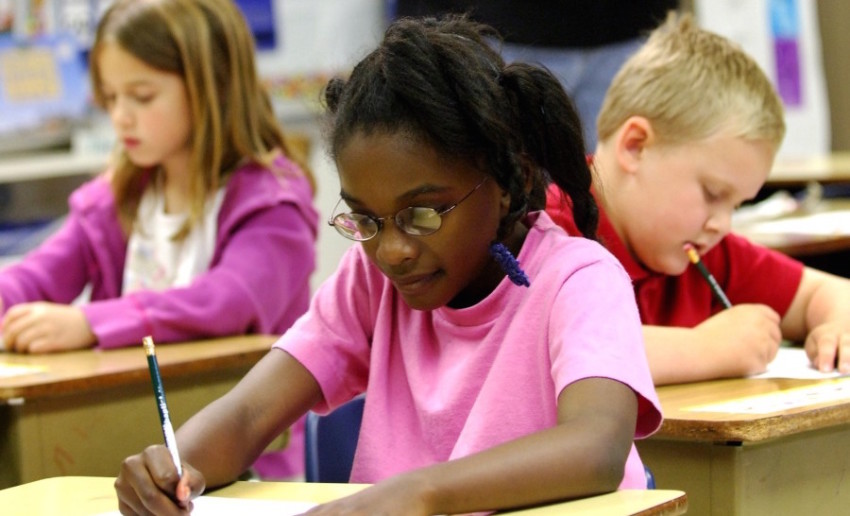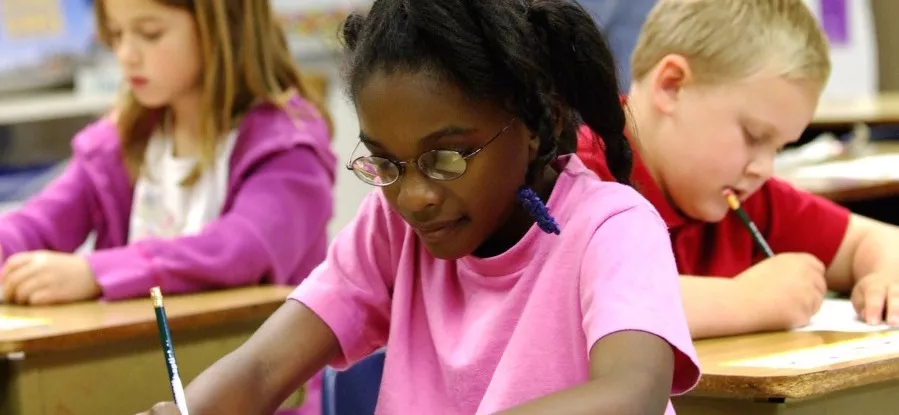 A brief released on Tuesday by the National Education Policy Center (NEPC) and supported in part by the Great Lake Center for Education Research & Practice underscores much of the same vision NEA has on providing equitable opportunities for every student—opportunities grounded in support, tools, resources, and time to learn despite race, zip code, or family background. The brief also stresses that relying on test scores is insufficient when it comes to understanding the progress of students, schools, districts, and public education in general.
A brief released on Tuesday by the National Education Policy Center (NEPC) and supported in part by the Great Lake Center for Education Research & Practice underscores much of the same vision NEA has on providing equitable opportunities for every student—opportunities grounded in support, tools, resources, and time to learn despite race, zip code, or family background. The brief also stresses that relying on test scores is insufficient when it comes to understanding the progress of students, schools, districts, and public education in general.
Investing in "Equal Opportunity: What Would It Take to Build the Balance Wheel?" uses a framework based on the vision of Horace Mann, who 150 years ago argued that education should be free and universal. This, Mann believed, would contribute to a well-educated nation and be the “great equalizer of the conditions of men, the balance wheel of the social machinery.”
Yet, despite this vision and the herculean efforts among educators nationwide to provide students with the opportunities to learn, disparities in education continue to exist.
The brief, which is consistent with NEA’s Opportunity Dashboard and the vision of the GPS Criteria and Indicators Framework, offers a way to close the gap between students in affluent communities and their peers in poor, urban, and often predominantly minority school districts.
The brief’s author, Professor Jennifer King Rice of the University of Maryland, says that the key is to incorporate the kind of learning that encourages civic responsibility, democratic values, economic self-sufficiency, cultural competency and awareness, and social and economic opportunity. Her recommendations urge schools to look beyond narrow standardized test scores, which often punish schools and students who need help the most.
Her analysis also endorses several NEA-aligned points: (1) schools strive to provide quality basic educational resources and focus on recruiting and retaining effective teachers and principals and keeping class sizes small; and (2) challenging and culturally relevant curriculum can also stimulate and challenge children to achieve, while sufficient quality time for learning and development can help them succeed in the classroom.
Rice lists several critical elements that provide all students with the opportunity to learn and achieve. The list includes wrap-around services for schools in high-poverty neighborhoods; services ranging from health and nutrition programs to parental education and recreational activities; and high-quality early childhood program as a step toward preparing kids to learn. The data, she notes, indicates test scores could be better used to develop students and educators, instead of being used as a high-stakes metric to punish struggling schools.
The brief houses several more corrective measures that can help close the gap, balance the wheel, and expand educational opportunities for students in the classroom and beyond.
"The real justification for these investments is our nation's commitment to equity," Rice says, "and the recognition that our public education system is a key mechanism for leveling the playing field so that every child, regardless of background, has a fair opportunity to participate in our social, political, and economic institutions."


